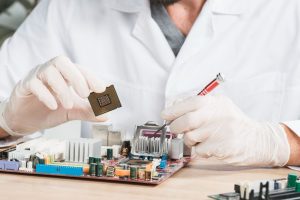How to Choose a Reliable Industrial Electronics Repair Partner
In the modern manufacturing and industrial sectors, downtime is the enemy. When a critical piece of industrial electronic equipment a PLC, a servo drive, a human-machine interface (HMI), or a power supply fails, the production line grinds to a halt. The swift, competent repair of these sophisticated components is paramount to maintaining operational efficiency and profitability. Choosing the right industrial electronics repair partner, such as FMG Electronics, isn’t just a matter of finding the lowest bid; it’s a strategic decision that directly impacts your plant’s resilience, longevity, and bottom line. A reliable partner acts as an extension of your maintenance team, helping you turn an unexpected cost into a sustained competitive advantage.
This article outlines key criteria and best practices for selecting a repair partner that you can trust to deliver quality, speed, and long term value.
1. Assessing Core Competencies and Expertise
The foundational step in your selection process must be a rigorous assessment of the potential partner’s technical capabilities. Industrial electronics encompass a vast range of technologies, from legacy analog boards to modern high-speed digital systems. A one size fits all repair shop is often a red flag.
-
Breadth and Depth of Service: Does the company specialize in your specific equipment? They should demonstrate proficiency across multiple brands (e.g., Siemens, Allen-Bradley, Fanuc, ABB) and product categories (e.g., AC/DC drives, power supplies, CNC controls). Ask for evidence of experience with legacy equipment, as many facilities still rely on components that are no longer manufactured.
-
The Technical Team: Inquire about the credentials and experience of the engineers and technicians. A reputable partner invests in continuous training to keep up with evolving industrial technology. They should have a strong understanding of component-level repair, not just board swapping, to provide the most cost effective and thorough solution.
-
Testing and Validation: True reliability is proven through testing. A top tier repair facility will utilize OEM-specific test stands and dynamic testing procedures that simulate real-world operating conditions. This ensures the repaired unit will function flawlessly upon reinstallation, minimizing the risk of repeat failure. Demand to know their standard testing protocol for your specific type of equipment.
2. Quality, Warranty, and Documentation
Quality control measures separate the exceptional repair partners from the mediocre ones. A reliable partner stands behind their work with robust guarantees.
-
Repair Quality: A professional repair involves more than just fixing the fault; it includes preventative maintenance on the unit. This means replacing common failure components (e.g., electrolytic capacitors, cooling fans, relays) as standard practice to extend the equipment’s service life.
-
Warranty Policy: A strong warranty is a non-negotiable indicator of confidence. Look for a minimum of a 1-year or 2-year functional warranty that covers both parts and labor. Be wary of short or conditional warranties.
-
Documentation and Traceability: The repair partner should provide detailed, transparent documentation with every job. This should include the initial failure report, a list of components replaced, the work performed, and the final test report. This documentation is vital for your internal maintenance records and troubleshooting.
3. Speed, Logistics, and Customer Service
The speed of repair is often the most pressing concern during a breakdown. However, logistics and communication are equally crucial.
-
Turnaround Time (TAT): Discuss standard and expedited repair options. While speed is important, it should never compromise quality. A good partner will provide a realistic estimate and stick to it. Ask about their typical turnaround for the components you send most frequently.
-
Logistics and Shipping: They should have a clean, systematic process for receiving, tracking, and shipping your units. Look for secure packaging standards to prevent damage in transit.
-
Communication: Effective communication is essential. You should receive prompt updates on the status of your repair, including any unexpected issues or revised timelines. A dedicated customer service representative who understands your operational needs is a significant asset.
4. Cost Structure and Financial Stability
While cost should not be the sole deciding factor, a clear and fair pricing model is necessary.
-
Transparent Pricing: The partner should provide detailed quotations before starting the work. Avoid companies that charge high, opaque fees for evaluation or diagnostics, or those that frequently issue surprise ‘additional parts’ invoices. A firm “not-to-exceed” price is preferable.
-
Cost-Benefit Analysis: Remember that a slightly higher repair cost from a reputable company is almost always cheaper than a single repeat failure caused by a poor repair from a low-cost vendor. Calculate the total cost of ownership, including the cost of potential downtime.
5. References and Industry Reputation
Finally, leverage the experience of others in your industry.
-
Request Customer References: Ask for contacts at companies ideally in your industry that use the repair service for similar equipment.
-
Check Industry Reputation: Look for online reviews, professional organization memberships, and industry certifications. A history of reliability and positive feedback is the strongest predictor of future performance.
By adopting a rigorous, multi-faceted approach to vendor selection, you transform the reactive process of repair into a proactive element of your operational strategy. A reliable industrial electronics repair partner is a long term strategic asset that helps ensure your machinery and your business keeps running smoothly.


